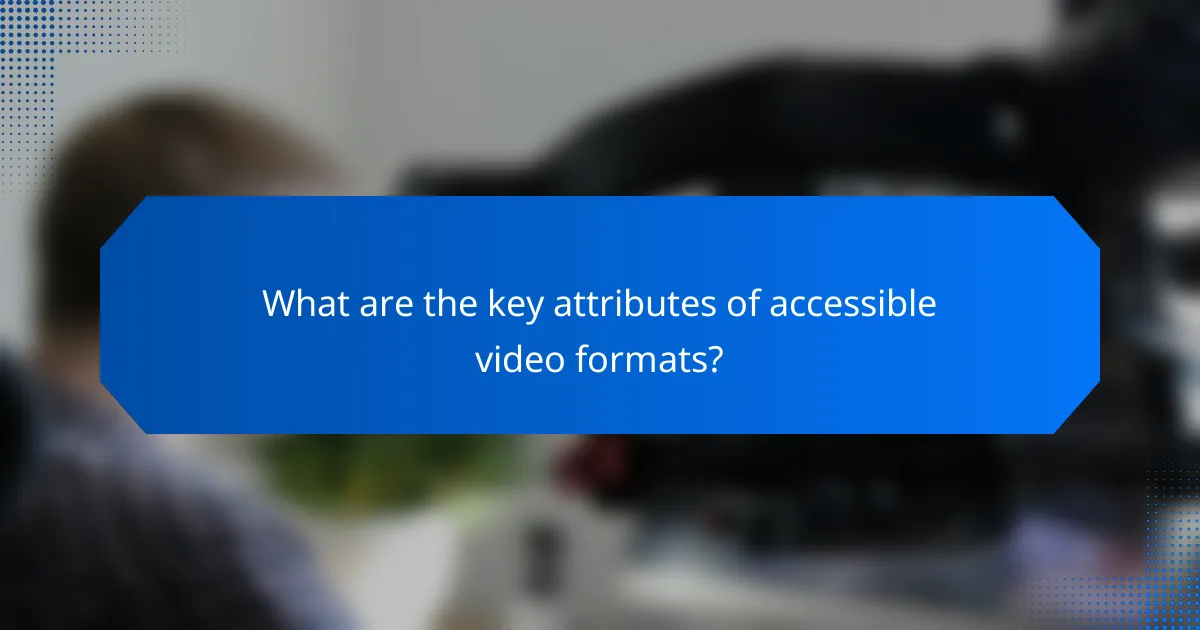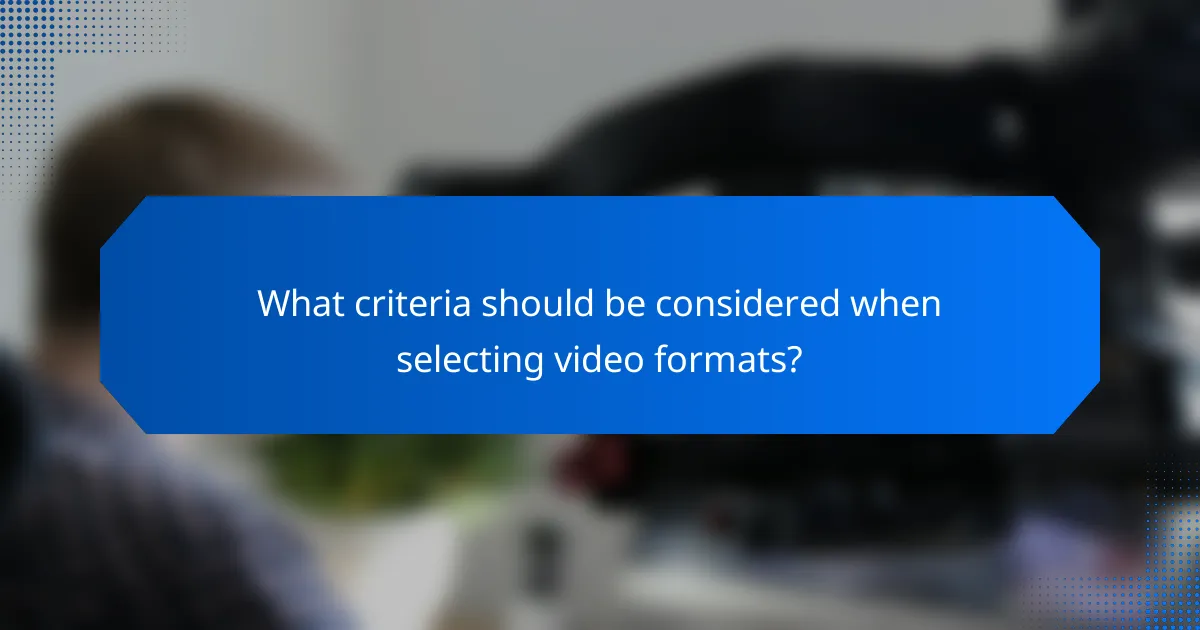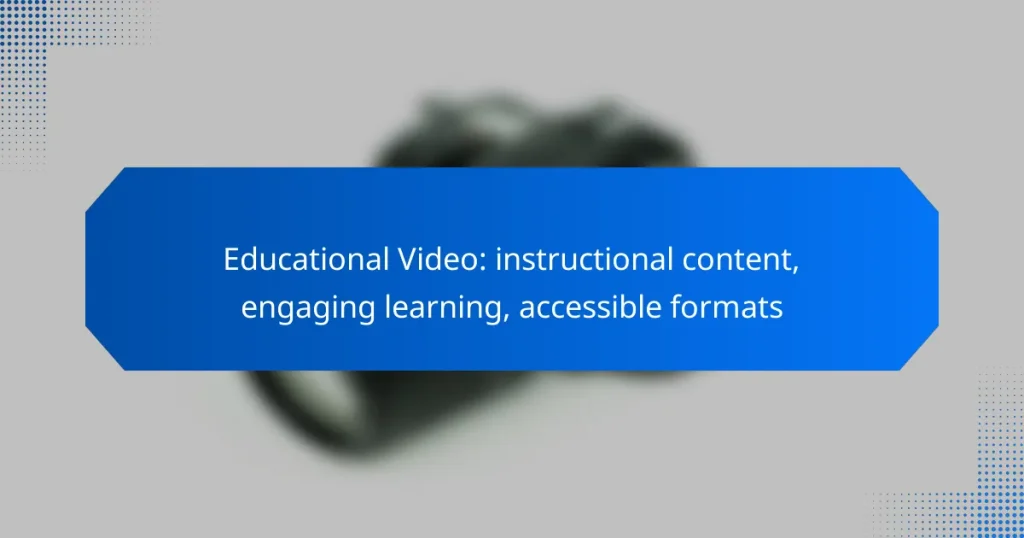Educational videos play a crucial role in enhancing instructional content by making learning more engaging and effective. By combining visual and auditory elements, these videos cater to diverse learning preferences, ultimately improving comprehension and retention. With platforms like YouTube, Vimeo, and Khan Academy offering valuable resources, educators can create interactive and relatable content that captivates learners and facilitates understanding.

How can educational videos enhance instructional content in Canada?
Educational videos can significantly enhance instructional content in Canada by making learning more engaging and effective. They combine visual and auditory elements to cater to various learning preferences, ultimately improving comprehension and retention.
Increased engagement through visual storytelling
Visual storytelling in educational videos captivates learners by presenting information in a dynamic format. This approach often includes animations, real-life examples, and relatable scenarios, which can hold the viewer’s attention better than traditional methods.
For instance, a video explaining Canadian history might use animated maps and historical reenactments to illustrate key events, making the content more relatable and memorable. Engaging visuals can lead to higher participation rates in online courses and improved overall satisfaction among students.
Improved retention of information
Educational videos enhance information retention by combining visual and auditory stimuli, which can help reinforce learning. Research suggests that learners retain information better when it is presented in a multimedia format compared to text alone.
For example, a study might show that students who watch a video on scientific concepts retain up to 50% more information than those who read the same material. This is particularly beneficial in subjects like mathematics or science, where complex ideas can be broken down visually.
Accessibility for diverse learning styles
Educational videos are accessible to a wide range of learning styles, making them suitable for diverse audiences. Visual learners benefit from graphics and animations, while auditory learners can grasp concepts through narration and discussions.
Additionally, videos can be easily adapted for learners with disabilities. For instance, closed captions can aid those who are hard of hearing, while visual descriptions can assist visually impaired students. This inclusivity ensures that educational content is available to all Canadians, regardless of their learning preferences or needs.

What are the best platforms for educational videos in Canada?
The best platforms for educational videos in Canada include YouTube, Vimeo, and Khan Academy. Each offers unique features that cater to different learning styles and content needs, making them valuable resources for both educators and learners.
YouTube for wide reach
YouTube is the largest video-sharing platform globally, making it an excellent choice for educational content due to its vast audience. With millions of users in Canada, educators can easily share their videos and reach a diverse demographic.
When using YouTube, consider optimizing your videos for searchability by using relevant keywords in titles and descriptions. Engaging thumbnails and clear calls to action can also enhance viewer retention and interaction.
Vimeo for high-quality content
Vimeo is known for its high-quality video hosting and professional community, making it ideal for educators who want to showcase polished content. The platform offers advanced privacy settings, which can be beneficial for sharing educational material in a controlled environment.
For Canadian educators, Vimeo’s customizable player and ad-free experience can enhance the viewing experience. Consider using Vimeo’s analytics tools to track viewer engagement and improve future content based on feedback.
Khan Academy for structured learning
Khan Academy provides a comprehensive platform for structured learning, offering a wide range of subjects and courses. Its interactive exercises and instructional videos are designed to help students grasp complex concepts at their own pace.
In Canada, Khan Academy is a valuable resource for both teachers and students, as it aligns with many educational standards. Encourage learners to utilize the platform’s progress tracking features to stay motivated and focused on their educational goals.

How to create engaging educational video content?
Creating engaging educational video content involves using techniques that capture attention and enhance learning. Focus on interactivity, relatable examples, and a well-structured script to keep viewers interested and facilitate understanding.
Utilize interactive elements
Incorporating interactive elements, such as quizzes or polls, can significantly enhance viewer engagement. These features encourage active participation, making the learning experience more dynamic and memorable.
Consider using platforms that allow for real-time feedback, enabling viewers to test their knowledge as they progress through the video. This not only reinforces learning but also keeps the audience invested in the content.
Incorporate real-world examples
Using real-world examples helps to contextualize the information and makes it more relatable for viewers. When learners can see how concepts apply in practical situations, they are more likely to retain the information.
For instance, if teaching financial literacy, illustrate concepts with current market trends or personal finance scenarios. This approach can bridge the gap between theory and practice, enhancing comprehension.
Maintain a clear and concise script
A clear and concise script is essential for effective educational videos. Aim for straightforward language and avoid jargon unless it is well-defined within the context. This ensures that your message is accessible to a broader audience.
Structure your script logically, breaking down complex ideas into manageable segments. A good rule of thumb is to keep each segment under three minutes to maintain viewer attention and facilitate easier understanding.

What are the key attributes of accessible video formats?
Accessible video formats are designed to ensure that all viewers, including those with disabilities, can engage with the content. Key attributes include features like closed captioning, audio descriptions, and multilingual subtitles, which enhance understanding and inclusivity.
Closed captioning for hearing-impaired viewers
Closed captioning provides a text representation of the audio content in videos, making it essential for hearing-impaired viewers. Captions not only display dialogue but also include sound effects and speaker identification, offering a comprehensive understanding of the video.
To implement effective closed captioning, ensure that captions are synchronized with the audio and are easy to read. Use a clear font, appropriate contrast, and position captions at the bottom of the screen to avoid obstructing important visuals. Consider using standards like the Web Content Accessibility Guidelines (WCAG) for best practices.
Audio descriptions for visually-impaired viewers
Audio descriptions provide a spoken narration of visual elements in a video, allowing visually-impaired viewers to comprehend the content fully. These descriptions typically occur during pauses in dialogue, describing actions, settings, and important visual cues.
When creating audio descriptions, focus on clarity and brevity. Use simple language to convey essential information without overwhelming the viewer. Testing with visually-impaired users can help refine the effectiveness of the descriptions.
Subtitles in multiple languages
Subtitles in multiple languages make video content accessible to non-native speakers and those who prefer to read in their native language. This feature broadens the audience and enhances comprehension for diverse viewers.
To implement multilingual subtitles, ensure accurate translations that capture the original meaning and tone. Consider using professional translators and subtitle services to maintain quality. Additionally, allow viewers to select their preferred language easily, enhancing user experience.

What criteria should be considered when selecting video formats?
When selecting video formats, consider compatibility with devices, file size for loading speed, and quality standards for clarity. These factors ensure that your educational videos are accessible and engaging for all learners.
Compatibility with various devices
Ensure that the chosen video format is compatible with a wide range of devices, including smartphones, tablets, and computers. Popular formats like MP4 and WebM are widely supported across different platforms, making them ideal choices.
Test your videos on multiple devices and browsers to confirm that they play smoothly without issues. This step helps avoid accessibility problems for users who may be using older technology or specific operating systems.
File size for faster loading
File size significantly impacts loading times, which can affect user engagement. Aim for a balance between quality and size; typically, keeping videos under a few hundred megabytes is advisable for quick loading.
Utilize compression tools to reduce file sizes without sacrificing too much quality. This practice helps ensure that users with slower internet connections can still access your content without long wait times.
Quality standards for clarity
Quality standards are crucial for maintaining clarity in educational videos. Aim for a resolution of at least 720p for clear visuals, with 1080p being preferable for more detailed content.
Consider the bitrate as well; a range of 1,500 to 5,000 kbps is often suitable for streaming without excessive buffering. Always preview your videos to ensure they meet your quality expectations before distribution.


